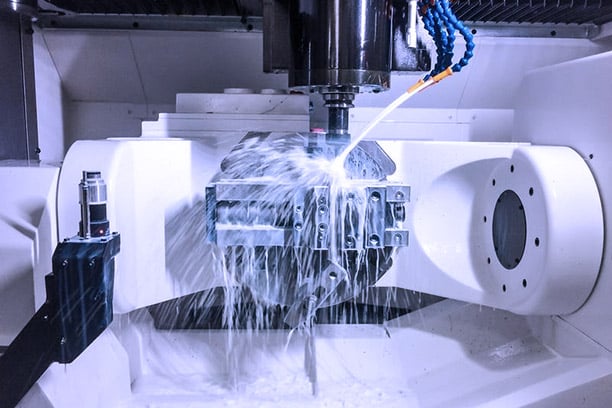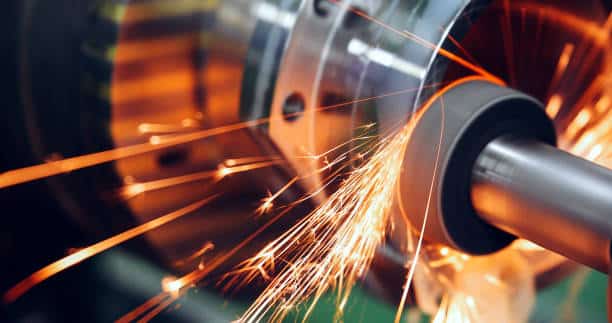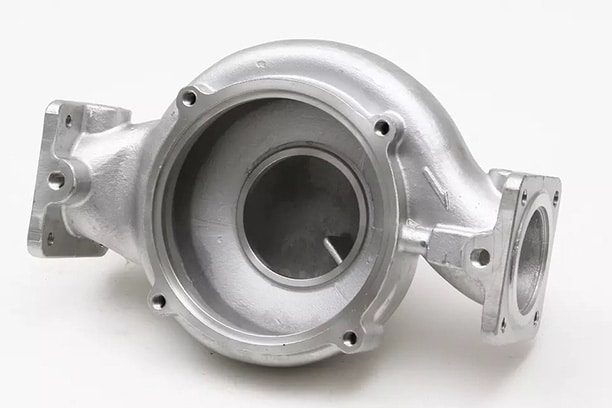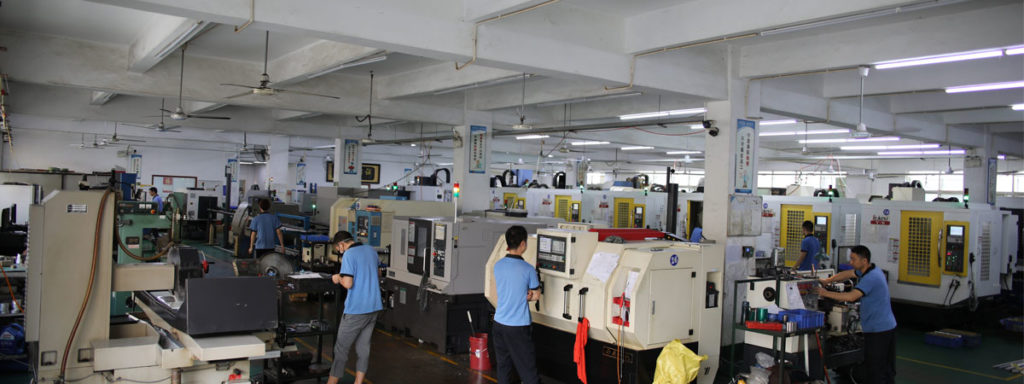The X-axis, Y-axis, and Z-axis have been used in traditional machining for well over a century. This method of material removal is still widely used in the milling industry. It is often regarded as the most efficient. Nevertheless, machinists have devised more sophisticated and productive techniques to make components, such as 3+2 and simultaneous 5-Axis machining, in the previous several decades.
A machine with five axes is created by adding two more to the standard three axes. However, this 3+2 mechanism is not identical to a 5-Axis machine. It may seem counterintuitive at first. Yet, this article will provide you with all the information you need to understand the difference between 3+2 and 5-Axis and make the best decision for your business.
What Is 3+2 Axis CNC Machining?
Milling machines, both vertical and horizontal, have allowed the standard three machining axes to be attained. However, rotary tables and tilt-rotary trunnions have been installed to provide rotational motion along two more axes. Basically, this is a 3+2-axis machining process.
Positional 5-axis machining describes this kind of machining since the fourth and fifth axes are employed to hold the component in place throughout the operation. The standard three-axis machining operation may then be carried out as an alternative to the ongoing movement that is required for the procedure. Further, the cutting tools used by 3+2 axis machining centers are shorter and more robust. Because of this, you may be certain of improved dimensional stability.
The 3+2 machining arrangement augments the benefits of a standard 3-axis machine center. The ability to machine 360 degrees around a workpiece is a major advantage. Because of this, fewer preparations are required throughout production. It will cut down on manufacturing time and expenses.
How Does 3+2 Axis CNC Machining Work?
In point of fact, the objective of 3+2 positioning CNC machining seems to be to achieve 3-axis machining at a given angle. This is the rationale behind the method. To put it another way, even when turned to a specific angle, the CNC machine tool continues to function in the same manner as a standard three-axis machine.
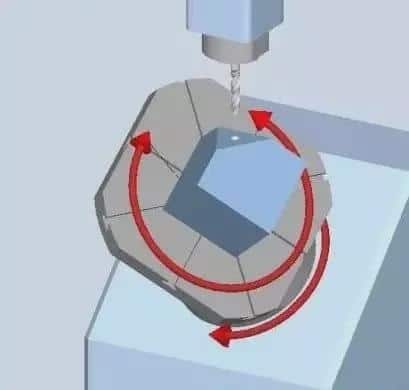
What Is Simultaneous 5-Axis CNC Machining?
Cutting tools in a simultaneous 5-axis machining process may be moved in all directions at once. The required components are manufactured concurrently by three linear axes and two rotating axes.
| Axis | Range of Axes Movement |
| X axis | left to right |
| Y axis | front to back |
| Z axis | up and down |
| A axis | 180° rotation around the X axis |
| B axis | 180° rotation around the Y axis |
| C axis | 180° rotation around the Z axis |
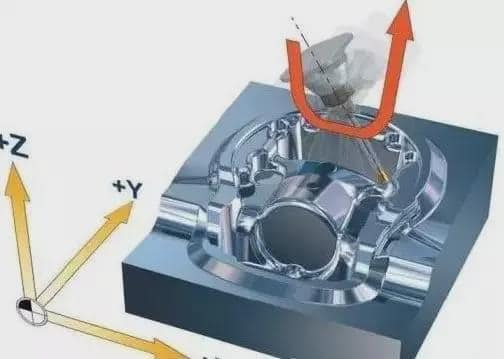
The tilting table axis (A) and rotating table axis (B) are the names given to the two supplementary axes. The axes’ movement reveals that 5-axis machining requires an extra tilt to the tool spindle or worktable. As a result, more motion and rotation take place, enhancing the performance of standard CNC machining procedures.
With the help of the fourth and fifth axes, machinists may create up to five different surfaces with a single pass. Thus, the procedure is both accurate and productive. Moreover, it expedites the process of making intricate details and frameworks. Due to the reduced setup, the method is cost-effective and may be used in a wide range of endeavors.
Learn more about our 5-Axis CNC Machining Service.
3+2 vs. 5-Axis CNC Machining
The setup is where you’ll see the most distinction between 3+2 and 5-Axis CNC machining. The cutting tools of a 5-axis machining center may be moved in five different directions. However, 3+2 axis machining combines the capabilities of 3-axis CNC machines with those of tilt-rotary trunnions and rotary tables.
The types of businesses and products most suited to 3+2 and 5+axis machining are also distinct. While 3+2 machining is effective for flat processing, 5-axis CNC machining is ideal for working with complicated shape surfaces. However, not all components require a full 5-axis, and sometimes 3+2 CNC machining seems to be more efficient. One of the significant advantages of 5-axis machining refers to that it can accomplish multiple kinds of CNC machining parts and geometrical fabrication, making it suitable for aerospace, armed services, and more demanding industry.
Which method should one select? You need to be aware of the benefits and drawbacks associated with each of them accordingly.
Advantages/Pros of 3 + 2 machining
The main advantages 3+2 axis machining offers are:
- Generate more complex features
This technique allows for the use of shorter, more rigid cutting tools for the fabrication of steep walls, undercuts in cavities, and many other intricate features. Also, specific angles with the cutting surfaces can be made. - Less programming code
Compared to simultaneous 5-axis machining, 3+2 CNC machining concerns lesser spatial trajectory. The rotational motion gets lesser with the shorter tool moving distance, allowing free-form surface processing in more accessible programming. - Lower costs and shorter cycle times
3+2 CNC machining has the ability to work on five or more different surfaces at a time while it may be a huge challenge for traditional 3-axis machining centers.
Disadvantages/Cons of 3 + 2 machining
3+2 machining is usually thought of as setting a constant angle to the spindle. Components with intricate geometries may require many titled views to cover the entire surfaces, but this will cause overlapping tool paths, increasing machining time.
Advantages/Pros of 5-axis Machining
- Costs and time-saving
5-axis machined components can be mass produced in a single operation. The single setup helps to save time and expense. Additionally, the use of shorter tooling extends the service life and removes the need for frequent maintenance and regular tool replacement, further reducing production costs and cycle time. - Excellent quality and precision
The latest 5-axis CNC machines on the market do not require adjusting workpieces at various angles when cutting, which greatly improves machining tolerances. It means 5-axis machining relates to lesser human interference, so the chances of error will be reduced while parts quality is improved. - Complicated geometric details
The 5-axis machining center allows the cutting tool to approach the part from any direction. Workpieces can be finished on this machine alone without being moved through multiple workstations. Not only allowing movement in the X, Y, and Z linear axes but also rotation in the A and B axes, the additional rotation in this machining method enables more complex geometries and shapes. - Increased productivity and repeatability
When using 5-axis machining, the cutting tool is usually tangent to the cutting surface. This configuration enables the additional material to be removed as the tool rotates. Thus, overall tooling costs and cycle time are deceased. Also, certain machine setups allow the use of shorter cutting tools, which improves the service life of the tool and guarantees repeatability. - Outstanding surface finishes
The extra axis makes workpieces aligned properly, making them closer to the cutting tool. Therefore, you can use shorter ones to create the desired shape. These tools can cut at a high speed with minimal vibration. Less vibration reduces “chatter” marks appearing on the final product. You can expect to create a superior surface finish while reducing the expense and time of post-processing.
Disadvantages/Cons of 5-axis Machining
It’s worthwhile to be aware of the disadvantages of 5-axis CNC machining although it has numerous benefits.
- Higher requirements for programming and operation
The extra axis of rotation and the spatial trajectory involved are specialized and abstract. Therefore, more programming effort is required to achieve the necessary machining precision, accuracy, and surface quality. - Higher Initial Costs
The price of a 5-axis CNC machine and its necessary software is quite high. It is much higher than the requirements of 3-axis or 4-axis machining centers. Likewise, the machine’s maintenance costs are higher and more complex than conventional machine tools. This factor also directly affects the machining cost of 5-axis machined parts. - Not available for some applications
4-axis and 5-axis machining techniques cannot be used when the cutter is too short or the handle is too broad. As such, vibrations cannot be avoided under tilted angles.
Which Is Better, 3+2 or 5-Axis Milling?
You’ll find that the capabilities of 5-axis and 3+2 machining are quite similar. Both may help any factory’s production line function more effectively. However, the appropriate method will be determined by the particular applications of the intended outcomes. For plane processing projects specifically, 3+2 machining is quite effective. Conversely, 5-axis machining works better with intricate contour surfaces.
Current users of 3-axis machining may quickly upgrade to full 5-axis machining operations with the help of 3+2 machining. It provides many of the high-end features of complete 5-axis machines without the hefty price tag. Since 5-axis machines have substantial setup and programming expenses, 3+2 machining may be the better option.
On the other hand, 5-axis machining centers improve productivity while making components with intricate geometries and stringent tolerance standards. They may usually boost both the efficiency and profitability of a broad range of processing tasks. As a result, less time is spent on setup, the finished product is more precise, and production times are reduced since they can process all five sides of a component simultaneously.
Want High-quality 5-axis CNC Machined Parts? Work with Runsom.
You may already have a basic understanding of the differences between simultaneous 5-axis CNC machining and 3+2 CNC machining. But cooperating with a reliable CNC manufacturer may be a more effective and economical manner to get exceptional quality and excellent accuracy parts and components that require tight tolerances and intricate geometries. At Runsom, our advanced CNC machine shop has equipped with a full set of simultaneous 5-axis CNC machines and 3+2 axis machines, and our well-trained machinists are ready to fabricate your parts exactly in accordance with your designs and specifications while assuring high quality and precision with incredible 5-axis CNC machining technologies.
Reach out to our technical teams to offer you appropriate solutions for your project. Or just upload your design files and configure material, finishing options, and lead time. Quick quotes for your custom CNC machined components can be available within 24h.
Other Articles You May be Interested in:

